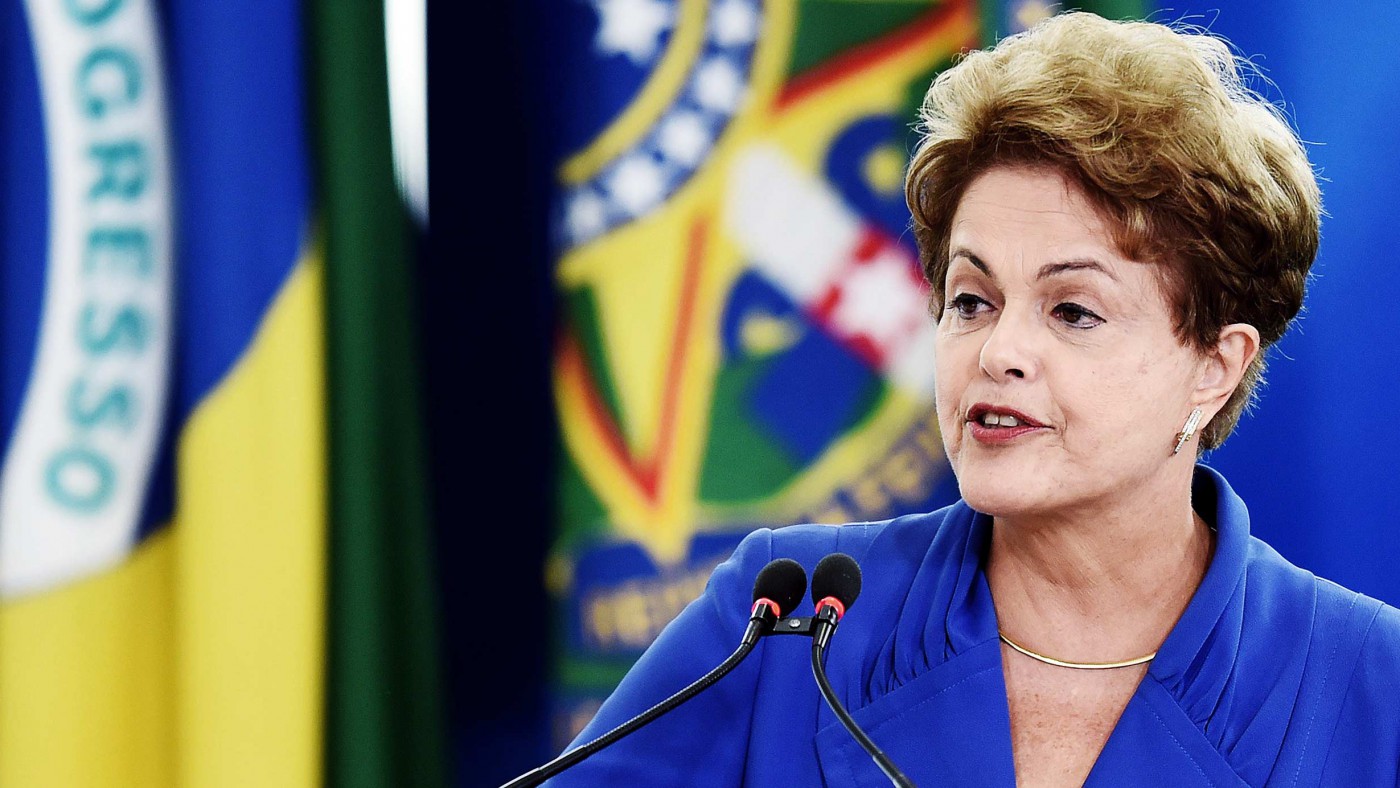“BRICs Hit a Wall”, declared the headline of Willliam Pesek’s Bloomberg View piece last Monday. The BRIC economies (Brazil, Russia, India and China), were meant to drive global growth as the West stagnated. It hasn’t quite worked out that way. Today, Russia is struggling under the combined forces of a sharp drop in oil prices (one of its key exports), EU sanctions due to the conflict with Ukraine, and corruption at every level of both the political and business landscape. China’s domestic demand is stagnating along with its exports, and it faces a difficult shift from manufacturing to a service-oriented economy. India is on the rise, with Modi on a mission to cut down corruption and bureaucracy, but its progress has been underwhelming, especially compared to the East Asian Tigers.
The most disappointing economy, however, has to be Brazil. Angel Ubide from Peterson Institute for International Economics wrote back in April:
“The list of its economic imbalances is endless: a rampant current account deficit in excess of 4 percent of GDP, an exchange rate that has long been overvalued but that has collapsed in just a few months, a public debt ratio to GDP in a rapid upward trend, a fiscal deficit of over 6 percent of GDP despite a high tax burden, an annual inflation rate of nearly 8 percent that has unanchored inflation expectations, an accelerated growth of wages well above their very low productivity.”
Even the Guardian is aware of just how bad things are in Brazil. The inflation rate currently stands 8.17%, and is predicted to rise further, while the country is headed for a deep recession. But Brazil shouldn’t be a lost cause. From the Bloomberg Quick Take:
“On paper, Brazil looks like a powerhouse. It’s the fifth-largest country in the world, by land mass and population. Its offshore oil reserves include the Western Hemisphere’s biggest discovery since 1976. It has the second-largest iron ore reserves, is the second-largest producer of soybeans and third-largest of corn. As much as 80 percent of its electricity comes from hydroelectric dams and it produces ethanol, meaning it has one of the world’s least carbon-intensive economies.”
How did things go so wrong for a country with so much potential, and such a wealth of natural resources?
It wasn’t an accident, but rather the result of a political strategy based on statism. María Elena Candia from Foreign Policy writes that “Starting in the 1950s, much of Brazil’s economic policy hinged on the policy mix known as developmentalism: protectionism, central planning, and the cultivation of the welfare state to encourage the growth of the internal market.” Half a century on, President Dilma Rousseff’s policies have mostly been strikingly similar. Candia continues:
“The populist economic measures involved artificial reductions of interest rates, consumption stimulus at the expense of fiscal discipline, limits on the return rate for private investments in infrastructure, and the imposition of fixed prices for gasoline and electricity below costs.”
If any of this sounds similar to Venezuela, where price controls have led to critical shortages and the state-run energy company is floundering (Venezuela is the only country in the world to have a Minister for Electricity Shortages), it should. Both South American countries pursued populist policies which restricted private enterprise and gave excessive power to the governments. Both have suffered crippling corruption, and seen the gift of their natural resources turn into a curse. While Venezuela is a much more severe case, Brazil does not seem to have learnt the lesson from its Northern neighbour.
Until now, that is. Recently, something surprising has been happening: Dilma Rousseff is turning back towards the markets. Her newly appointed pro-market finance minister Joaquim Levy (nicknamed “Minister Scissorhands”) has set Brazil on an austerity track, which included cutting public spending by $22.4 billion and increasing prices regulated by the government. He has promised in no uncertain terms to eliminate Brazil’s budget deficit. Meanwhile, the editors at The Economist write that:
“Financial watchdogs are equally impressed with Alexandre Tombini, the Central Bank’s governor, who has not allowed the threat of recession to deter him from fighting inflation, currently above 8%. On June 3rd the bank raised interest rates by half a percentage point, to 13.75%. Mr Tombini’s goal is to bring inflation down to 4.5%, the midpoint of the bank’s target range, by next year.”
Essentially, Brazil’s new plan seems to be to cut spending and devalue the currency to improve global competitiveness. This is a good start, but it isn’t enough. Brazil has serious structural problems which need to be addressed. These include “an enterprise-crushing tax system, inadequate infrastructure and antiquated labour laws”.
In short, over the last sixty years Brazil’s government got way too involved with the labour market and businesses, funding development programmes and welfare benefits it couldn’t afford, and crippling the ability of private firms to harness the potential of the country’s national resources. Cutting pensions won’t solve all of that. Rousseff seems to have finally come round to the idea that government control is not helping her country’s economy or its people. Let’s hope she keeps going.


